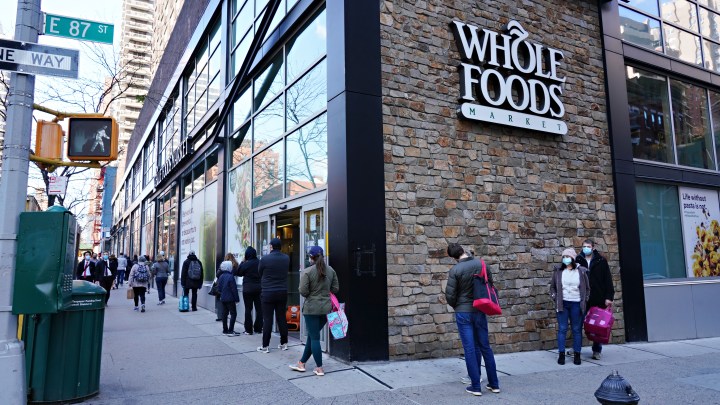
Amazon has tacked on a Whole Foods delivery fee. Add to cart?
Amazon has tacked on a Whole Foods delivery fee. Add to cart?

Amazon is pulling back from free Whole Foods deliveries. Now, it’ll cost $9.95 to get an order of organic milk and fancy olives at your door.
It’s a signal that even the biggest of retail giants are now passing on the added costs of delivery and other expenses to consumers.
Deliveries are a headache for grocers — refrigerated trucks, tight windows for those perishable foods and driver wages. Those costs quickly add up for retailers.
“Maybe seven bucks a delivery,” said Sucharita Kodali, a retail analyst at Forrester. It’s just not a service that makes much sense. “Grocery, in the best of circumstances, is a very low-margin business, and then when you add delivery on top of it, it’s just unprofitable,” she said.
Whether parking, packaging or delivery, people don’t like to pay for things that are not actual products. That’s why many retailers often only reveal fees when it comes to checkout time, said Ayelet Fishbach, professor at the University of Chicago Booth School of Business.
“At that point, you’re probably too tired to pay attention to this cost. You’re already too invested in getting these groceries, and so you are likely to buy,” Fishbach said.
And in this economy, fees can feel inevitable, said Diana Smith at Mintel.
“Given where inflation rates are right now and the increasing prices that retailers are having to absorb, they are unfortunately having to pass along some costs to consumers. And it is risky,” she said.
Risky because some customers will reject those costs — like Henry Corelle, who used to get Whole Foods deliveries two or three times a month in Chicago. Last winter, he’d sometimes get deliveries more often when it was freezing for weeks.
“The ability to not leave the house was spectacular,” he said.
But Corelle’s not happy with the fee.
“It feels ticky tacky on top of already paying that Amazon Prime annual membership,” he said.
Corelle shops at Target now. But he said he might be less grumpy about the Whole Foods fee when snow falls again.
There’s a lot happening in the world. Through it all, Marketplace is here for you.
You rely on Marketplace to break down the world’s events and tell you how it affects you in a fact-based, approachable way. We rely on your financial support to keep making that possible.
Your donation today powers the independent journalism that you rely on. For just $5/month, you can help sustain Marketplace so we can keep reporting on the things that matter to you.

















